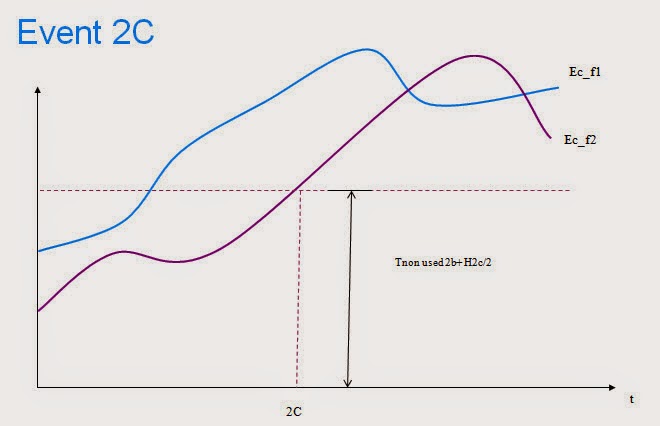UMTS Handover Overview
UMTS Intra-Frequency Handover Strategy
UMTS Inter-Frequency Handover Strategy
UMTS Inter-RAT Handover Policy
UMTS SRNS Relocation
UMTS Handover Overview
Handover Overview
- Handover types:
- Soft handover
- Softer handover
- Hard handover
- Handover technology:
- Intra-frequency handover
- Inter-frequency handover
- Inter-RAT handover
- Handover steps:
- Measurement
- Handover decision
- Handover implementation
- Halving of Spreading Factor (SF)
- In one radio frame some timeslots can be specially assigned for inter-frequency/Inter-RAT measurement and some can be specially assigned for data transmission.
- Higher Layer Scheduling
- The higher layer adjusts and controls the data transmission rate. The bandwidth remains unchanged.
Intra-Frequency Handover
- The intra-frequency handover can be triggered based on Ec/No or RSCP measurement through the parameter IntraMeasQuan.
- Active set
- Monitored set
- Detected set
Intra-Frequency
Measurement
- When conducting intra-frequency measurement, the UE needs to implement layer 3 filter for the measurement results to avoid measurement fluctuation:
Neighboring Cells
Configuration
- If the number of intra-frequency neighboring cells exceeds 32, it needs to delete some cells to ensure that there are only 32 intra-frequency neighboring cells.
- Priority combination strategy
- Sorting strategy
Cell Priority
- The OMCR configuration parameter MeasPrio is used to define the priority of adjacent cells and includes three values:
- 0: High priority
- 1: Medium priority
- 2: Low priority
Intra-frequency
measurement events
- A series of intra-frequency measurement events are defined in 3GPP as the judgment and trigger criteria for intra-frequency handover.
- Event 1A: A Primary CPICH enters the Reporting Range.
- Event 1B: A Primary CPICH leaves the Reporting Range.
- Event 1C: A Non-active Primary CPICH becomes better than an active Primary CPICH.
- Event 1D: The best cell changes.
Cell Individual Offset
- For each cell that is monitored, an offset can be assigned with inband signalling. The offset can be either positive or negative. The offset is added to the measurement quantity before the MS dose evaluate while an event has occurred.
- Offset of neighbor cell parameter, CPICH Ec/No, can be set as the offset which MS pluses it to neighbor cell measurement result, CPICH Ec/No, before compares it with reporting principle value, Ec/No.
- Cell individual offsets can be regarded as the tool of moving cell edge.
Time-To-Trigger
- If a to-be-evaluated cell meets the reporting range or threshold of certain event, the condition must be met within a period of time before the reporting of this event to avoid intra-frequency event misreport due to the fluctuation of radio quality.
Intra-Frequency Handover
Softer Handover
Intra-RNC Soft Handover
Inter-RNC Soft Handover
Inter-RNC Soft Handover(Iur)
Carrier evaluation
standard
Inter-frequency
measurement events
- A series of inter-frequency measurement events are defined in 3GPP as the judgment and trigger criteria for inter-frequency handover:
- Event 2A: The best carrier frequency changes.
- Event 2B: The quality of working carrier frequency is lower than a threshold and that of non-working carrier frequency is higher than a threshold.
- Event 2C: The quality of non-working carrier frequency is higher than a threshold.
- Event 2D: The quality of working carrier frequency is lower than a threshold.
- Event 2E: The quality of non-working carrier frequency is lower than a threshold.
- Event 2F: The quality of working carrier frequency is higher than a threshold.
Compressed Mode
Enabling/Disabling
- Among all inter-frequency measurement events, Event 2D and Event 2F only involve measurement of working carrier frequencies, so the compressed mode is not required during measurement and extra overhead will not be brought about to both UE and RNC. The compressed mode can be enabled and disabled based on the definition of 2D/2F.
Event of inter-frequency
handover
The same cell can only use one of Event 2A, Event 2B and Event 2C to trigger inter-frequency handover. Which of the three events will be used is based on the inter-frequency handover recommendation strategy parameter InterHoTactic.
Handling of Event 2E
Inter-RAT Transition
State Diagram
Inter-RAT measurement
events
- 3GPP defies a series of Inter-RAT measurement events. An UE reports the corresponding events when defined conditions are met.
- 3A: The currently used UTRAN carrier quality is lower than a threshold, and the quality of other radio systems is higher than a threshold. It is used for decision of Inter-RAT handover.
- 3C: The quality of other radio systems is higher than a threshold. It can be used for Inter-RAT handover decision.
Processing of Inter-RAT
Events
- In a cell, inter-RAT handover can only be triggered by 3A or 3C event, which is controlled by Inter-RAT handover tactic RatHoTactic.
- When only PS service exists, adopt cell reselection process of PS service handover.
- When CS service and PS service exist simultaneity, suspend PS service firstly, then handover CS service to GSM and handover PS service to GSM in sequence.
Inter-RAT Handover
Inter-RAT Handover
Relocation Triggered by
Soft Handover
Relocation Triggered by
Hard Handover
End of Course































































































